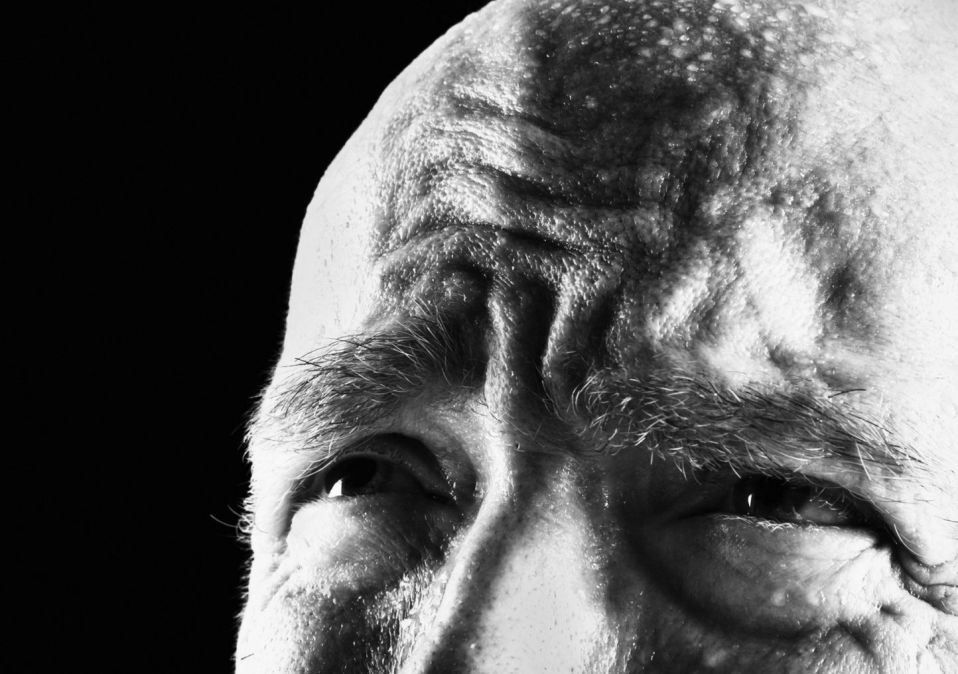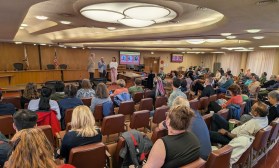State CIOs want to improve digital services, but it’s ‘a whopping lot of work’

There’s a tradition in state government of not particularly caring about the human psyche.
State agencies are responsible for providing benefits and services that are essential for millions of Americans, but their shambolic processes reveal an understanding of the monopoly they hold: You can’t get a driver’s license anywhere else, so please fill out this complicated form.
But that attitude may be shifting, with chief information officers and other IT officials leading the way to erode this bureaucratic apathy.
A will to change is helpful, but it’s not enough. State CIOs told StateScoop that challenges abound in their organizations, from their decades of legacy tech and processes to organizational and human obstacles, such as finding a way to fund an initiative that everyone seems to want, but few want to pay for.
‘It’s our mission’
Connecticut CIO Mark Raymond told StateScoop it’s hard to fund improvements to digital services because funding often needs to come from existing projects. There’s rarely money dedicated to making government easier to deal with.
“The business case of solving for a business or a resident’s experience and improving that across multiple different programs, there’s no clear owner of the business case,” Raymond said. “Funding comes from different avenues. Agencies have this program-esque view of the world, and some have limits on how you can spend it.”
Funding for unemployment insurance, for example, must often go only toward that particular program, which might prohibit spending on software or process redesigns that makes the benefit more accessible. But Raymond said making services more accessible is often integral to their purposes.
“We in government often provide those services that are services of last resort for people,” he said. “They don’t have anywhere else to go and we have to serve them. It’s our mission. But do we really understand how our constituents would like to use our services?”
‘One-stop shop’
Delivering services in a seamless fashion is particularly difficult for government because it must serve everyone. People who don’t speak English, lack access to the the internet or have physical disabilities are more likely to struggle with poorly designed instructions on official forms.
Raymond said many of his state’s decision makers understand this, but it’s still hard to find support for digital service improvements when it requires diverting money away from, say, repairing a bridge.
One common solution to the digital services problem is creating a unified portal or “one-stop shop” where residents view every potential piece of business they have with their state. No state has yet completely realized such a vision, but many have started by creating sites catering to business, providing owners with easy access to licenses, permits and other information.
Utah CIO Alan Fuller is among those trying to create a statewide portal. He said it would eliminate the need for residents to remember numerous login credentials and repeatedly enter the same information into the state’s many websites. But even better, he said, the state may install machine-learning software that can recommend to residents various services, boosting convenience and potentially reducing the rate of unclaimed benefits.
‘A whopping lot of work’
But creating these portals is hard, Fuller said, particularly in Utah, where he manages a portfolio of more than 1,500 services.
“Every agency is out there operating as its own business and they have their own mission, their own funding, their own executive and yes they all report up to the governor in our state, but they operate pretty independently and therefore they all tend to have their own view of the customer,” he said. “That is the fundamental challenge that we have to address.”
Fuller said creating a single view of each resident requires solving two main technical challenges. The first is creating an “enterprise master person index,” a means of resolving identity across the state’s many databases: Is the Bob Smith who holds a beekeeper’s license the same Bob Smith who recently applied for a building permit?
“It’s a big lift because you have to go out there and change hundreds and hundreds of applications now to recognize this single sign-on,” Fuller said. “There’s a process you have to do for every single application out there. That’s a whopping lot of work and it’s hard to do.”
The second challenge, he said, is connecting the portal to the data held by those hundreds of applications. One-stop portals aren’t intended to replace existing services, but to serve as a concierge for the services that already exist. But notifying Bob Smith that his library book is overdue requires the portal to have an API connection to the library. And then every other service needs an API, too.
The Utah legislature in 2021 passed a law requiring the state to build a digital portal that connects all its services. Fuller said the goal is to collectively save Utahns one million hours per year. But his passion, he said, is to spare the most pressured members of society from what’s currently a “circular and Byzantine” process of applying for benefits.
“We can make it a better, more seamless process,” Fuller said. “I really do think it’s doable. “It’s a big job because there’s a lot of complexity behind the scenes, but I really think we’re going to make a big difference on this in the next couple years.”
‘Turn it upside down’
Minnesota CIO Tarek Tomes also wants to improve his state’s digital services, but his approach focuses on “personas” — like small business owners or single parents — rather than treating everyone the same.
“The approach of a singular hub is a view of a destination from the service provider’s perspective, and we want to challenge that model and turn it upside down and put Minnesotans at the center of how we approach process work related to how we render those services,” Tomes said. “That means really understanding the variety of personas government interacts with, which is not always ‘customers.’”
Like Utah’s Fuller, Tomes said he wants to save people’s time. He said the state has already collectively saved Minnesotans a collective 30 years of tedious form-filling through its revamped social services portal, MNbenefits. That project, developed with the civic-tech nonprofit Code For America, cut the average application time from one hour to under 10 minutes, he said.
But Minnesota isn’t concerned with putting every service on one website, Tomes said.
“[We’re] attempting to tackle what’s most meaningful, which is how do people transact with the services,” Tomes said. “If ultimately that is all in one type of service hub, that’s fantastic. That is certainly an aspiration, but the value part of it has to be a priority and come first before we seek some of those more delivery-related transformations like a singular hub.”
‘Earning that transaction’
Delivering services “how people want to consume them,” rather than in a way that’s most convenient for government will require “a huge cultural shift,” Tomes said. He said the fact that state governments have a monopoly on certain services should make them work even harder to ensure they’re delivered well.
“We really want to think about it from the perspective of earning that right and earning that transaction and making sure that what we design really serves everyone,” he said.
And in Minnesota, Tomes said, improving digital services is necessitating a shift from project-based work to product-based work, where services are continually updated, not forgotten once they’re online.
Connecticut’s Raymond told StateScoop that not long after he became state CIO in 2011, a state lawmaker asked him when the state was going to be done spending on technology.
“In the back of my head, I’m like ‘when government stops changing we’ll be done,’” he said. “And government doesn’t stop changing. I don’t think being done is even a goal.”

This story was featured in StateScoop Special Report: Digital Services (2023)






